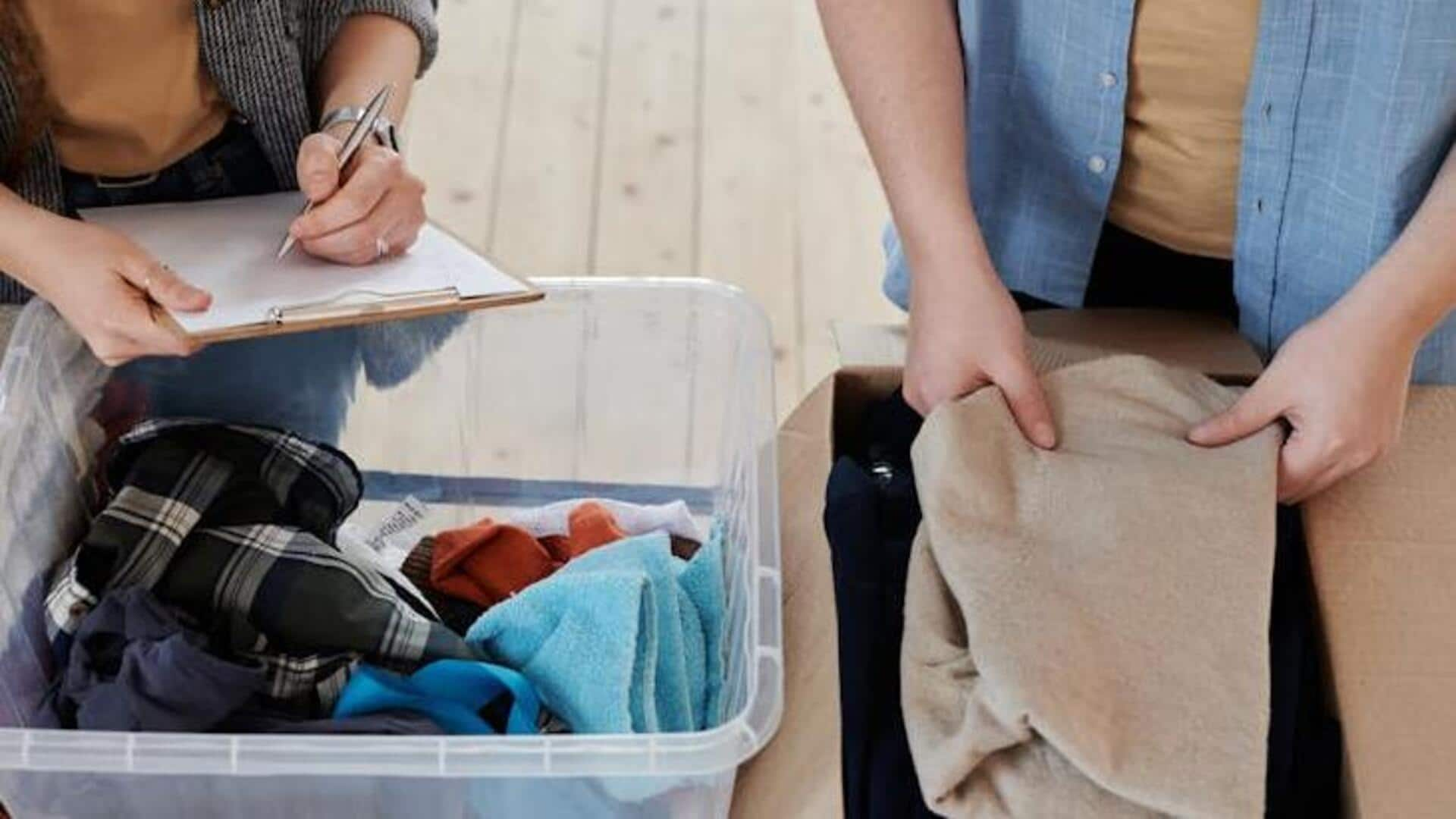
How to fold clothes properly
What's the story
Folding clothes efficiently can help you save time and space, and make your daily routine smoother. Be it organizing a closet or packing for a trip, mastering the art of folding can come in handy. This article gives you some practical tips to help you fold clothes quickly without compromising on neatness. Following these methods, you can keep your clothes wrinkle-free and easy to access whenever needed.
Basic technique
Mastering the basic fold
The basic fold is a must for most clothing items, be it t-shirts or pants. Lay the garment flat on a surface, smooth out any creases and fold it in half vertically. Next, fold it horizontally into thirds or quarters depending on how big your storage space is. This technique will keep clothes compact and organized.
KonMari approach
The KonMari method
The KonMari method involves folding clothes into small rectangles that stand upright in drawers. Start by laying the item flat, then fold each side toward the center to form a rectangle. Fold from top to bottom until it stands upright. This technique maximizes drawer space and makes it easier to see all items at once.
Rolling technique
Rolling clothes for travel
Rolling clothes is a fab trick for travelers looking to save space and prevent wrinkles in their bags. Start by placing the clothing item on a flat surface and gently smooth out any wrinkles for a neat finish. Then, begin at one end and roll the item tightly towards the opposite end. The trick works especially well for t-shirts, jeans, and other lightweight fabrics, making it a favorite of seasoned travelers.
Folding board tool
Using folding boards
Now, a folding board can also speed up the process while ensuring that all the folds are uniform. Simply place the board on top of a shirt or a similar item, and follow its guidelines to make precise folds quickly. This tool comes particularly handy when you're dealing with a lot of laundry.
Delicate handling
Quick tips for delicate fabrics
For delicate fabrics like silk or linen, be gentle. Smooth out wrinkles before folding loosely. Don't press too hard on creases, which could damage fibers over time. Proper handling during storage processes, like stacking them neatly inside drawers, will keep them protected. This avoids unnecessary wear-and-tear caused by improper handling techniques. These techniques are used elsewhere throughout household chores involving clothing maintenance routines.